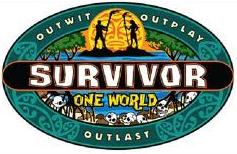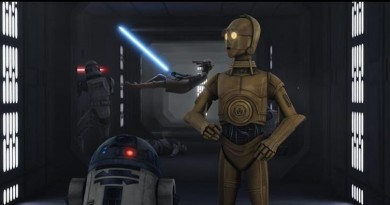Surviving Through Teamwork
I’ve been a fan of Survivor since the beginning. The locations are amazing, but the interpersonal dynamics that drive the show are what really caught my attention. People say and do the darnedest things when loneliness, extreme weather, and hunger set in. And then there’s the matter of that million dollars…
 If you’re writing fiction, especially action adventures in space, almost every page is devoted to keeping characters in anxiety-inducing situations. If there’s too much down time, the story slows and the reader eventually gets bored. It’s the same reason Survivor gives little focus to the reward getaways, except for how they affect interpersonal dynamics. Survivor, at least for me, is a fantastic way to observe the behavior of humans when they are trying to outwit, outplay, and outlast their opponents.
If you’re writing fiction, especially action adventures in space, almost every page is devoted to keeping characters in anxiety-inducing situations. If there’s too much down time, the story slows and the reader eventually gets bored. It’s the same reason Survivor gives little focus to the reward getaways, except for how they affect interpersonal dynamics. Survivor, at least for me, is a fantastic way to observe the behavior of humans when they are trying to outwit, outplay, and outlast their opponents.
Interestingly, this season’s “One World” theme pitted the original teams as men versus women and left them at the same location from the very beginning. The result: for the first time in twelve years, the finale featured an all-female top five.
Women already had proven capable of winning physical and mental challenges when pitted directly against men. This season’s winner, Kim, dominated the individual challenges that required strength, stamina, and mental fortitude. And she not only won the votes of enough contestant jurors, many of whom she had previously blind-sided, but also the Fan Choice award.
Speaking during the final jury council, Chelsea pointed out a very important reason the top three were sitting at the top – they had picked teammates and worked together to the end. Some of the most notorious players in Survivor history are the back-stabbers and manipulators, but usually it’s the best alliance-maker who wins.

As human culture has evolved over the centuries, the notion of team success has started to influence what appeals to movie-goers and fiction readers, too. In Return of the Jedi, Luke’s triumph is purely personal, but the story also gives the fans a team triumph with the Rebel victory. While movies about individual superheroes like Spider-Man, Iron Man and Superman have continued to do well, movies like The Hunger Games and The Avengers are proving that teamwork has an even broader appeal.
In FANgirl’s Fate of the Jedi series poll, the books receiving the most votes, Outcast and Apocalypse, featured teamwork. The mostly female Darkmeld in Outcast harkened back to the Rogue, Wraith, and Twin Suns Squadron dynamics in earlier Star Wars books that made those stories very popular with fans. Also in that book, the pursuit of the crazed Valin Horn showcased the Jedi Order working together. This type of teamwork didn’t really return in earnest until Apocalypse, where most of the story follows units of Jedi and their various allies as they battle the Sith. From the feedback I’ve seen, most readers preferred this part of the story far more than the narrowly focused concluding struggle between Abeloth and Luke Skywalker.
Telling a story about multiple members of a team is actually much harder than writing about a single protagonist’s lone quest. The standard hero’s journey focuses on one character’s progression, and the stories of all the other characters become ancillary to the hero. In 1977, A New Hope was already redefining this dynamic by introducing Han and Leia, who both captured fans’ imaginations. As I’ve learned over the years of playing with fiction, allowing strong characters’ arcs to crash into each other often produces unexpected results, but also more relatable and engaging storytelling. That’s exactly what happened with The Empire Strikes Back and Return of the Jedi.
I’ll be discussing more about teamwork in storytelling over the next couple of months. My novel Wynde started with my core team – Vespa, Gemini, Zephyr, and Terraq – who each have character arcs for the individual books and the series as a whole. As I’m writing the closing of the book, they’re finally reunited to face down the Big Bad. It’s my belief that Vespa’s interdependence of these alliances make her a stronger heroine, while at the same time giving more readers a chance to find their favorite characters to root for.
A graduate of Duke University, Tricia is a registered Professional Engineer who designs transportation systems as a consultant. In her free time, she shows horses and maintains a website for Star Wars EU fans that creates a safe place for women and men to discuss literature and all things pertaining to geek culture. She is currently writing her first full-length original novel, a space opera based around the heroic journey of a young woman who finds herself in the middle of a deadly terrorist attack by an invading alien force. For information on the book, please check out TriciaBarr.com.
- Hyperspace Theories: Bad Luck Ghorman - June 2, 2025
- Hyperspace Theories: One Year Later as ANDOR Kicks Off Season Two - May 15, 2025
- REVIEW: Tales of the Underworld - May 4, 2025












Thanks for connecting some of my favorite things and doing a great job of showing how team work in lit and on reality TV can help us see that teamwork is important in life as well
Pingback:Rey’s Heroic Journey in The Force Awakens – FANgirl Blog